Ask Ethan #56: Are black holes made of dark matter?
There’s five times as much dark matter as normal matter in the Universe. But how much of that matters for black holes?
Image credit: NASA/ESA Hubble Space Telescope collaboration.
“A single day is enough to make us a little larger or, another time, a little smaller.” –Paul Klee
Believe it or not, the above quote applies just as equally to black holes as it does to an individual human being. Some days may see a black hole grow by a tremendous amount, while others may see it shed more mass-and-energy than it gains! This week’s Ask Ethan question comes courtesy of Michael Booth, and touches not only on this aspect of black holes, but another, darker side:
Since dark matter interacts with baryonic matter only gravitationally, and since there’s 5 times more dark matter than baryonic matter, 5/6th of a black hole must be dark matter. Does that tell us anything useful about black holes?
There are a number of things to consider in a question like this, so let’s start by considering what a black hole actually is, and with the fact that (thankfully) our planet isn’t one.

If you take a planet like Earth, there’s a tremendous amount of gravitational energy holding beings like us on its surface. In order to escape from the gravitational field of our planet, we’d have to achieve a tremendous speed in order to do so: around 11,200 m/s (25,000 mph). The gravitational field at the Sun’s photosphere is much stronger, and we’d need to be moving at around 618,000 m/s (1,382,000 mph) to escape its gravitational pull. These speeds are fast, but attainable under the right conditions.
But if we had enough mass in a small enough region of space, the escape speed something would need to reach could be greater than 299,792,458 m/s (670,616,629 mph), which is the speed of light in a vacuum. Since nothing can travel faster than that speed, nothing would be able to escape from it, not even light. Hence, you’d have a black hole.
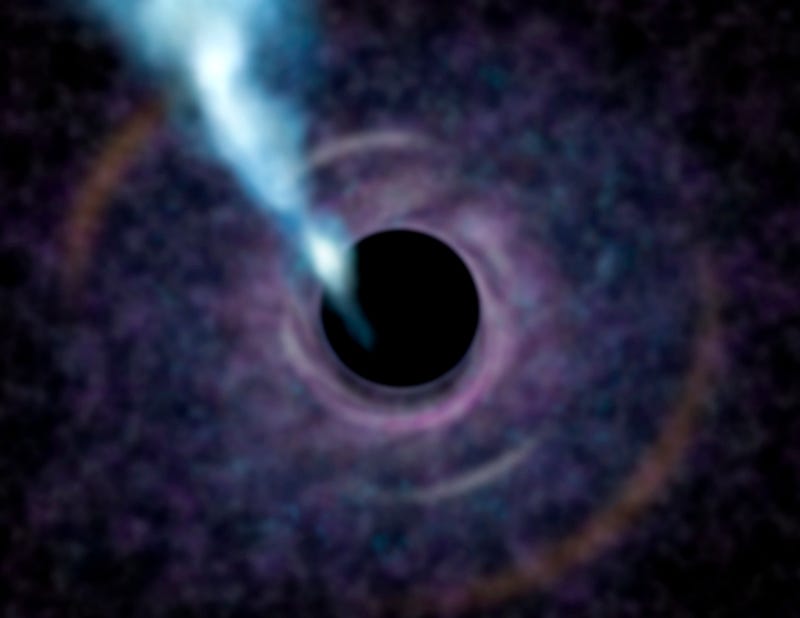
From the outside, we can’t tell whether a black hole was initially made up of protons and electrons, neutrons, dark matter or even antimatter. There are — as far as we can tell — only three properties that we can observe about a black hole from outside of it: its mass, its electric charge and its angular momentum, which is a measure of how fast it’s spinning. So if we want to know whether a black hole was initially made of normal (baryonic) matter, or whether it was made of dark matter, we have to look at two things:
- The astrophysics of how black holes form in the first place, and
- The science of how they gain-and-lose mass once they’re already there.
Let’s start with where they come from.

When you look up at a young cluster of stars in the sky, you’re likely to see something like this: a number of very prominent, bright blue stars. If you looked closer, you’d find that while these blue stars are the hottest and brightest, they’re not really representative of the majority of the stars. For every blue giant that forms, there are hundreds of run-of-the-mill stars like our own Sun or dimmer; in fact, only 5% of the stars ever formed in the Universe are bigger and brighter than our parent star!
But it’s these largest, hottest and brightest of stars that are relevant for black holes, even though they’re the rarest of all. You see, the reason they’re so bright is because they’re burning through their nuclear fuel at an incredibly rapid rate. A star like our Sun might live for 12 billion years before running out of fuel in its core, but a star ten times as massive will live just 0.1% as long. Now, consider that the most massive stars we know are actually hundreds of times as massive as our Sun, and you’ll start to get an appreciation for how short-lived these giants can be.
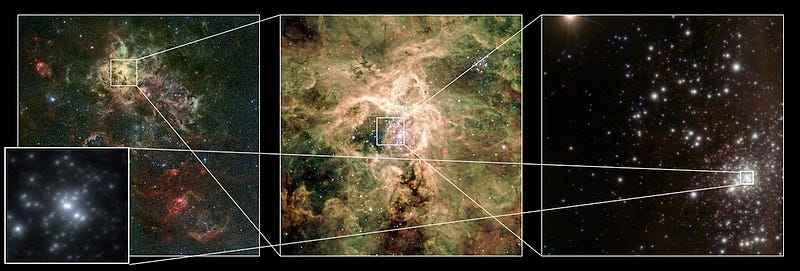
Sure, they can burn some of their fused products for a while — they can fuse helium into carbon, then carbon into oxygen, neon and magnesium, then oxygen into silicon, and finally silicon into iron — with the star’s core contracting and heating up at every one of these stages.
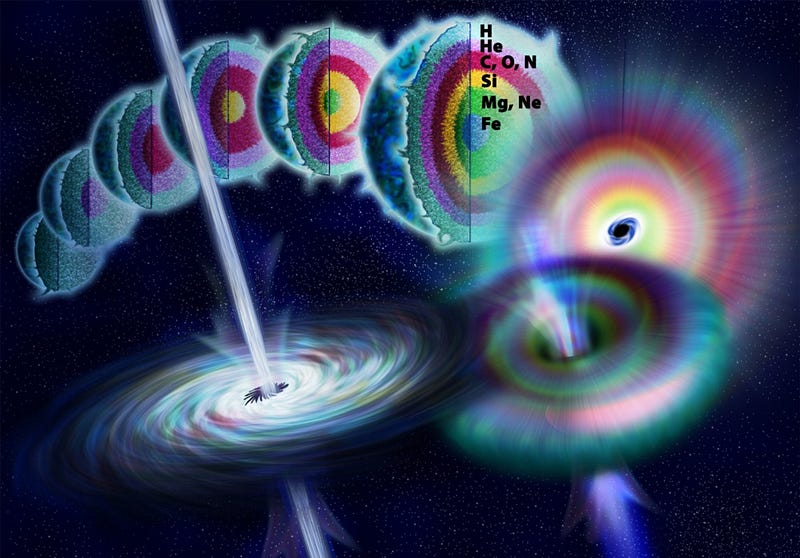
It’s these new burning processes that hold the star up against gravitational collapse, but iron is the final straw. When this last stage occurs, there’s no energy to be gained by fusing iron into anything heavier, and so the star’s core simply collapses under its own gravity. Neither the atoms nor the atomic nuclei can hold themselves up under gravity’s pull, and while the outside of the star explodes in a spectacular supernova, the inner core collapses down into a black hole.

So initially, when they’re first formed, black holes are pretty much 100% normal (baryonic) matter, and just about 0% dark matter. Remember that dark matter interacts only gravitationally, unlike normal matter, which interacts via the gravitational, weak, electromagnetic and strong forces. All of this is a fancy way to say that when normal matter comes into contact with other normal matter, it goes “splat,” meaning that it can stick together, clump, exchange momentum and accrue even more normal matter when this occurs. Dark matter, on the other hand, doesn’t “splat” either with normal matter or with other dark matter. This is why, when we look at galaxies and clusters of galaxies, we picture spiral or elliptical galaxies where the normal matter is confined to a relatively small region of space, but they are embedded within dark matter halos that extend for maybe thousands of times the volume of the normal matter.
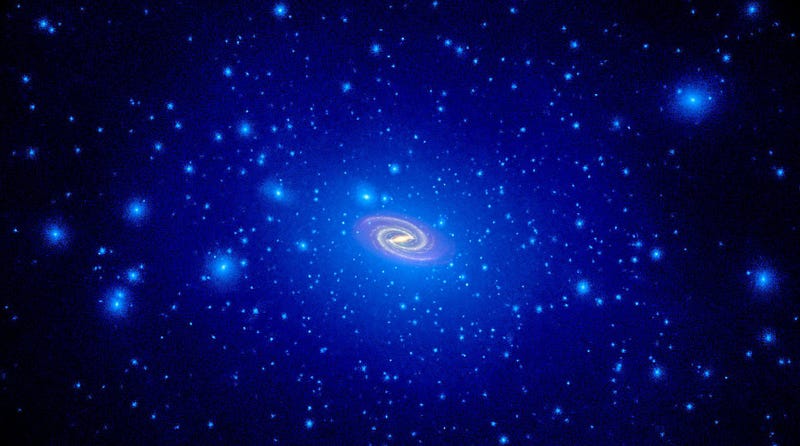
Yes, there’s perhaps five times as much dark matter total in large galaxies and clusters as there is normal matter, but that’s summed up over the entire huge halo. For the region of space where we’re talking about, we’re in the innards of the galaxy, where the normal matter totally dominates over dark matter. Consider just the region of space where we’re located: around our Sun. If we drew a sphere that was 100 AU in radius (where one AU is the distance of the Earth from the Sun) around our Solar System, we’d enclose all the planets, moons, asteroids and pretty much the entire Kuiper belt, but the baryonic mass — the normal matter — of what would be inside our sphere would be dominated by our Sun, and would weigh about 2 × 10^30 kg. On the other hand, the total amount of dark matter in that same sphere? Only about 1 × 10^19 kg, or just 0.0000000005% the mass of the normal matter in that same region.
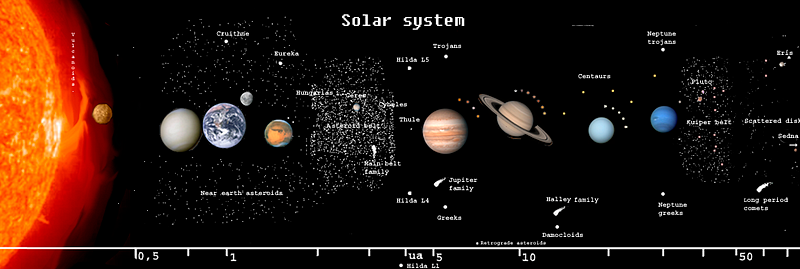
For comparison, that’s about as much mass as is contained in the asteroid Juno, pictured as “3” below, silhouetted against the Earth’s moon for scale.
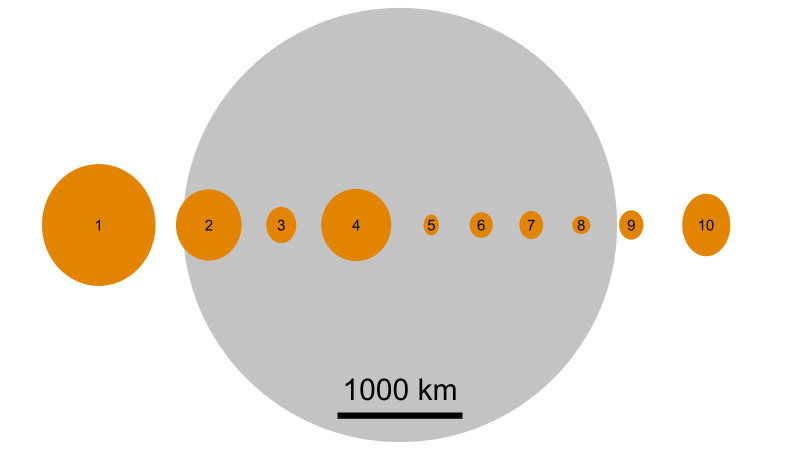
Now, whether we’re talking about these individual black holes located thousands of light years from the galactic center or the supermassive ones that have formed from the merger of many other black holes near the galactic core, they all started off from approximately 100% normal matter and 0% dark matter.
But they feed on both over time.
Contrary to popular belief, black holes don’t “suck” anything in; they simply exert a gravitational force at a distance. For dark matter that would otherwise pass by, if that gravitational force happens to bring it within the event horizon, the black hole will “eat” it, growing in mass as a result. But for normal matter that comes within the black hole’s vicinity, the same properties that cause it to “splat” also cause it to radiate, break apart and lose momentum. It also causes it to interact with the accretion disk, experiencing friction, losing momentum and increasing the amount of matter that will be swallowed. In other words, even when normal matter simply passes by, part of it gets devoured, something that wouldn’t be the case for dark matter.
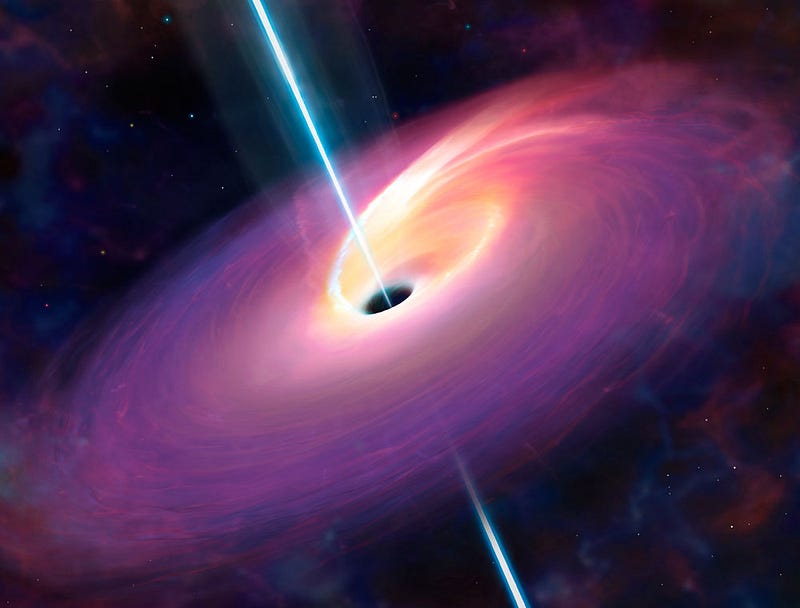
If you want to grow your black hole, though, the simplest way to compare how much normal matter gets eaten vs. how much dark matter gets eaten would be to ignore this effect, and simply compare the normal matter density vs. the dark matter density. For our location, the density of normal matter is 1.2 × 10^28 kg-per-cubic-light-year, while the density of dark matter is still pretty large: 2.5 × 10^27 kg-per-cubic-light-year, or about 20% of what normal matter is. That’s not so bad!
But you’ve got to remember, we’re near the outskirts of the Milky Way; the galactic center is a very different story.

There’s even more dark matter in there, because the density of the dark matter halo should increase as we move in towards the galactic center. However, it ought not increase by all that much. There are tremendous uncertainties here, but even the most optimistic increase would be by a factor of around 10,000. (With pessimistic, or more isothermal, estimates topping out at a factor of 10-to-100.) On the other hand, the density of normal matter in the galactic center is about 50 million times as large as it is near us. While dark matter might be responsible for up to 16% of a black hole’s growth out where we are, it could only, at most, be responsible for 0.004% of a black hole’s growth at the galactic center.
And that’s the tough reality of it:
- Black holes form almost entirely out of normal matter no matter where they form.
- The ones that form where the density of matter is low — like out where we are — will have a substantial portion of that growth come from dark matter, but that growth is (on average) negligible compared to the initial black hole’s mass.
- The ones that form where the density of matter is high — like near the galactic center — will experience significant growth, but at least 99.996% of that growth comes from normal matter and not dark matter.
So that’s the sad truth, that dark matter is too small of a component of black hole formation and growth to be of any importance, and hence, can’t teach us very much about dark matter.
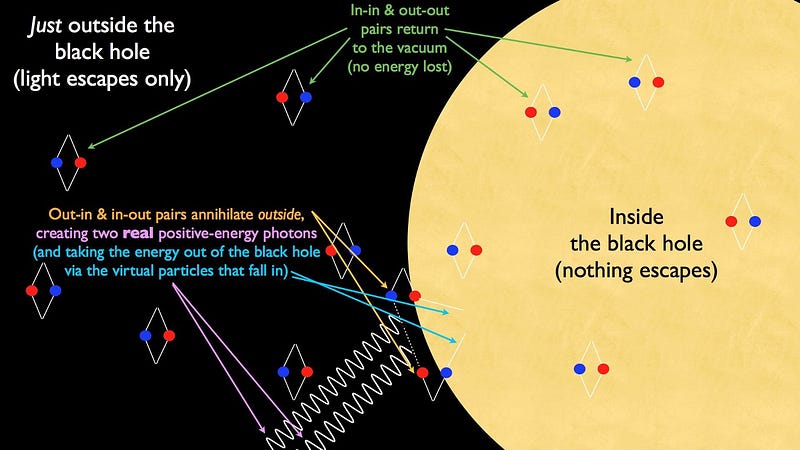
Some of you may be wondering about black holes losing mass as well: something that happens due to Hawking Radiation. Although this definitely happens, this process is so slow as to be completely negligible on these timescales. A solar mass black hole would take 10^67 years to evaporate, meaning that it loses less than an electron’s worth of mass in a year due to Hawking radiation, while the largest supermassive black holes in the Universe will take 10^100 years to evaporate, and will lose less than an electron’s worth of mass when the entire amount of time the Universe has existed up until now (since the Big Bang) passes once again. So for those of you hoping for mass loss, I hate to disappoint you, but you’ll have to wait until the Universe becomes empty due to dark energy, and the black holes get kicked out of their galaxy due to gravitational interactions before the rate-of-decay gets anywhere near the rate-of-growth from devouring matter.
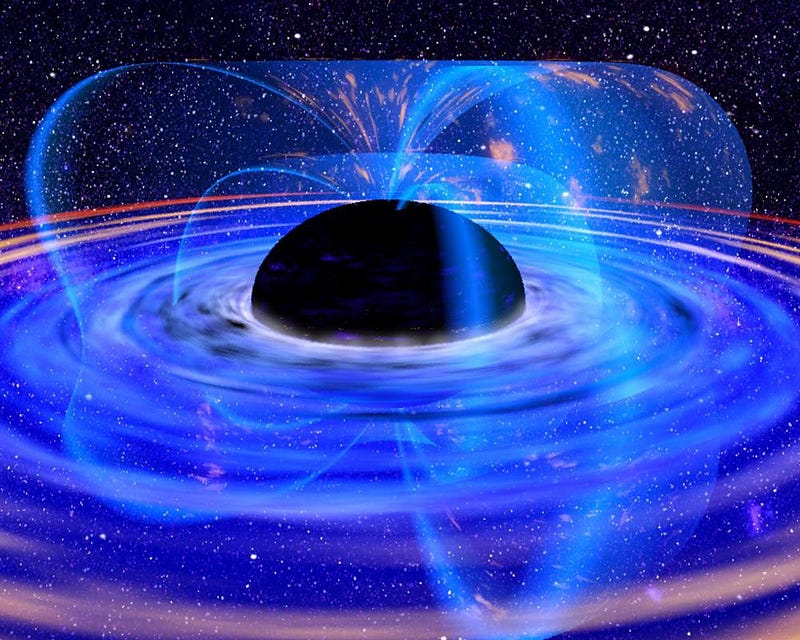
And there you have it: a quantitative answer to the question of whether black holes are made of dark matter or not. At most they can only be made of about 0.004% dark matter, and that’s the most optimistic number that applies only to the most massive ones! Thanks for a great question, Michael, and if you have a question or suggestion for the next Ask Ethan column, send it in. You never know; the next one could be yours!
Leave your comments at the Starts With A Bang forum on Scienceblogs!





